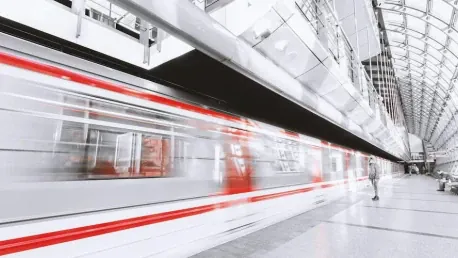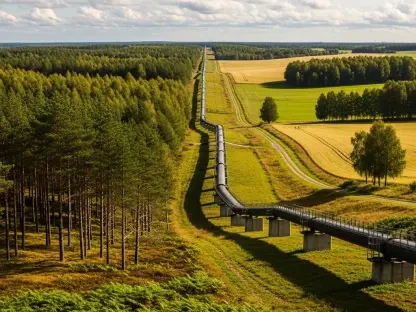Vietnam’s railway infrastructure is on the brink of a transformative overhaul. The Ministry of Transport has introduced a draft revised Railway Law, targeting significant upgrades to the existing 2017 Railway Law. This legislative evolution, set for potential enactment by the National Assembly in October 2025, endeavors to foster incentives for railway enterprises, streamline investment in railway infrastructure, enhance connectivity with other transport modes, and modernize railway transport activities.
Incentives for Railway Enterprises
Enhanced Corporate Income Tax Incentives
The draft Railway Law proposes substantial tax incentives aimed at stimulating investment within the railway sector. Enterprises involved in railway infrastructure and the railway industry will benefit from a 10-percent corporate income tax rate, marking the highest incentive level allowed by the current corporate income tax law. Additionally, these enterprises will enjoy import duty exemptions for essential machinery, equipment, spare parts, and materials that are not manufactured domestically.
By offering these financial advantages, the draft law aims to make the railway sector more appealing to both domestic and foreign investors. Investors often face high initial costs when entering the railway industry, mainly due to the expenses associated with new technology and machinery. The proposed tax incentives significantly reduce these initial barriers, making the sector more accessible and attractive for new and existing players. Further, the import duty exemptions ensure that companies can procure high-quality, necessary materials without the burden of additional costs, allowing them to focus more heavily on innovation and operations.
State-Owned Enterprises and Capital Expansion
State-owned enterprises will be granted the flexibility to increase their charter capital for projects that involve importing new railway equipment and advanced technological lines, a move that can significantly modernize the industry. This measure integrates state capital investment into key modernizing efforts in the railway sector.
These changes are designed to attract both domestic and foreign investors by reducing the financial burden associated with high upfront costs and offering longer-term economic incentives. Enterprises fully owned by the state would be permitted to channel state capital into expanding their projects, thereby fostering a robust, competitive railway industry. By providing avenues for capital expansion, the government aims to spur innovation and efficiency, ensuring that Vietnam’s railway infrastructure keeps pace with global advancements.
Railway Infrastructure Investment and Management
Emphasis on Public-Private Partnerships
Public-private partnerships (PPP) play a pivotal role in the new draft law. The state’s capital contribution for railway investment projects is capped at 80 percent of the total investment capital, encouraging private sector involvement. This cap ensures that while the state offers substantial financial support, there remains a significant incentive for private entities to invest, bringing in their expertise and efficiency to the projects.
Provincial authorities must cooperate with the Ministry of Transport (MOT) to secure sufficient land for developing urban centers around railway stations, incorporating commercial services, offices, and hotels into these plans. By involving provincial authorities in the planning and development stages, the draft law looks to ensure a seamless blend of railway infrastructure with urban development, ultimately leading to more integrated and user-friendly transport systems. This collaborative approach between the public and private sectors is poised to enhance the overall execution and sustainability of railway projects.
Urban Development and Revenue Allocation
Local governments can launch public investment projects to facilitate land compensation and resettlement, auctioning land use rights to fund urban development initiatives. The generated revenue will be partially redirected into railway infrastructure development, ensuring a continuous improvement cycle. This mechanism not only addresses the immediate funding needs but also establishes a sustainable revenue stream for ongoing and future railway projects.
The draft law also allows for the use of front-end engineering designs in feasibility studies for high-speed and advanced urban railway projects, accelerating the project kickoff process. By using front-end engineering designs, project developers can provide more detailed and accurate cost estimates and technical evaluations upfront. This practice is intended to streamline the approval process and reduce project delays. Ensuring that projects get off the ground more quickly and accurately encapsulates the draft’s focus on efficiency and modernization.
Regional Coordination and Project Implementation
Provincial authorities may be authorized to carry out urban and regional railway infrastructure projects following government approval. For routes spanning multiple provinces, local governments must coordinate to appoint a primary locality responsible for submitting the investment policy proposal. This collaborative approach aims at efficient project management and optimized resource allocation.
By centralizing the submission process, the draft law seeks to eliminate bureaucratic delays and ensure more coherent planning and execution. Additionally, the coordination between multiple provinces helps in resource optimization and project synchronization, thereby minimizing redundant efforts and costs. This regional cooperation is crucial for the successful implementation of large-scale projects, ensuring that improvements in the railway infrastructure benefit a broader demographic and geography.
Connection with Other Transport Modes
Integration with Airports and Seaports
One of the draft law’s significant facets is enhancing the connectivity between railways and other transport modes. Railways intersecting international airports with over 30 million annual passengers, as well as special and grade-I seaports, are mandated to establish rail connections. The state will support these integration efforts with inland container depots, waterway ports, and cargo transshipment hubs.
By mandating these connections, the draft law aims to create a more integrated and efficient transportation network that facilitates both passenger and cargo movement. This integration is particularly important for improving logistics and reducing transportation costs, making Vietnam more competitive in the global market. Enhanced connectivity also means shorter travel and shipping times, offering significant advantages to businesses and travelers alike.
Land Allocation and Exemptions
Project developers are mandated to reserve land for railway connections, with organizations and individuals exempt from land rental fees in designated areas. These exemptions aim to reduce costs and encourage the development of critical transport linkages, facilitating smoother and more efficient cargo and passenger transitions across different modes of transport.
By removing financial barriers associated with land acquisition, the draft law seeks to expedite the development of multimodal transport hubs. These hubs are crucial for creating a seamless and efficient transportation network, allowing for easy transfers and reduced transit times. The exemptions also encourage private sector participation, driving innovation and modernization in transport infrastructure.
Strategic Placement of Passenger Terminals
Passenger terminals on national railway routes passing through urban areas of grade-I or higher must be strategically placed within urban centers to minimize transfer times and enhance traveler convenience. For new railways intersecting existing roads, project owners will need to construct non-level crossings and feeder roads, alongside ensuring the installation of railway safety corridor fences to improve overall safety and efficiency.
The strategic placement of terminals and the construction of non-level crossings aim to streamline passenger transfers and enhance overall travel experience. These measures are aligned with global best practices, ensuring that passengers face minimal disruptions and enjoy a more efficient and safe journey. Furthermore, these infrastructure improvements are crucial for accommodating the growing demand for urban transport, ensuring that the railway system can handle increased passenger volumes without compromising on safety or efficiency.
Railway Transport Activities
Decentralization of Certification Processes
The draft law outlines the decentralization of various certification processes. Provincial-level People’s Committees will now oversee issuing, re-issuing, revoking, and deregistering rolling stock registration certificates and urban train driving licenses. This shift aims to streamline operations and improve local governance.
By decentralizing these processes, the draft law intends to make the certification procedures more efficient and responsive to local needs. Provincial authorities, being more familiar with regional dynamics, can ensure quicker and more effective management of these certifications, reducing bureaucratic delays and improving service delivery. This approach is expected to enhance operational efficiency and pave the way for a more agile and responsive railway system.
Revised Train Driver Licensing Criteria
The criteria for obtaining a train driving license are being updated to focus on health certifications, professional diplomas or certifications from authorized training institutions, test completion, and driver’s internship experience, while eliminating age restrictions. This adjustment aims to improve the quality and safety of train operators.
By emphasizing skill and health certifications, the draft law seeks to ensure that only qualified and capable individuals are at the helm of train operations. This focus on competency over age aligns with modern employment practices, ensuring that the best candidates are selected for critical roles. The removal of age restrictions also opens up opportunities for a broader pool of applicants, promoting inclusivity and diversity in the workforce.
Emphasis on Green Technologies
Vietnam’s railway network is on the verge of a significant transformation, with the Ministry of Transport proposing a draft revised Railway Law. This new legal framework aims to replace the current 2017 Railway Law, bringing sweeping upgrades and innovations to the country’s rail system. The proposed law, which the National Assembly will consider for potential enactment in October 2025, seeks to create favorable conditions for railway enterprises. It will enhance incentives for investment in railway infrastructure, thereby expediting modernization efforts. Additionally, the new law is designed to integrate rail transport seamlessly with other modes of transportation, fostering a cohesive network that improves overall connectivity. With these updates, the Ministry of Transport aims to make railway operations more efficient, better managed, and technologically advanced. The overall goal is to elevate Vietnam’s railways to meet contemporary standards, ensuring the system is globally competitive and capable of supporting the nation’s economic growth and development. The new law is not just a series of regulatory changes but a comprehensive strategy to revolutionize Vietnam’s railway sector.









